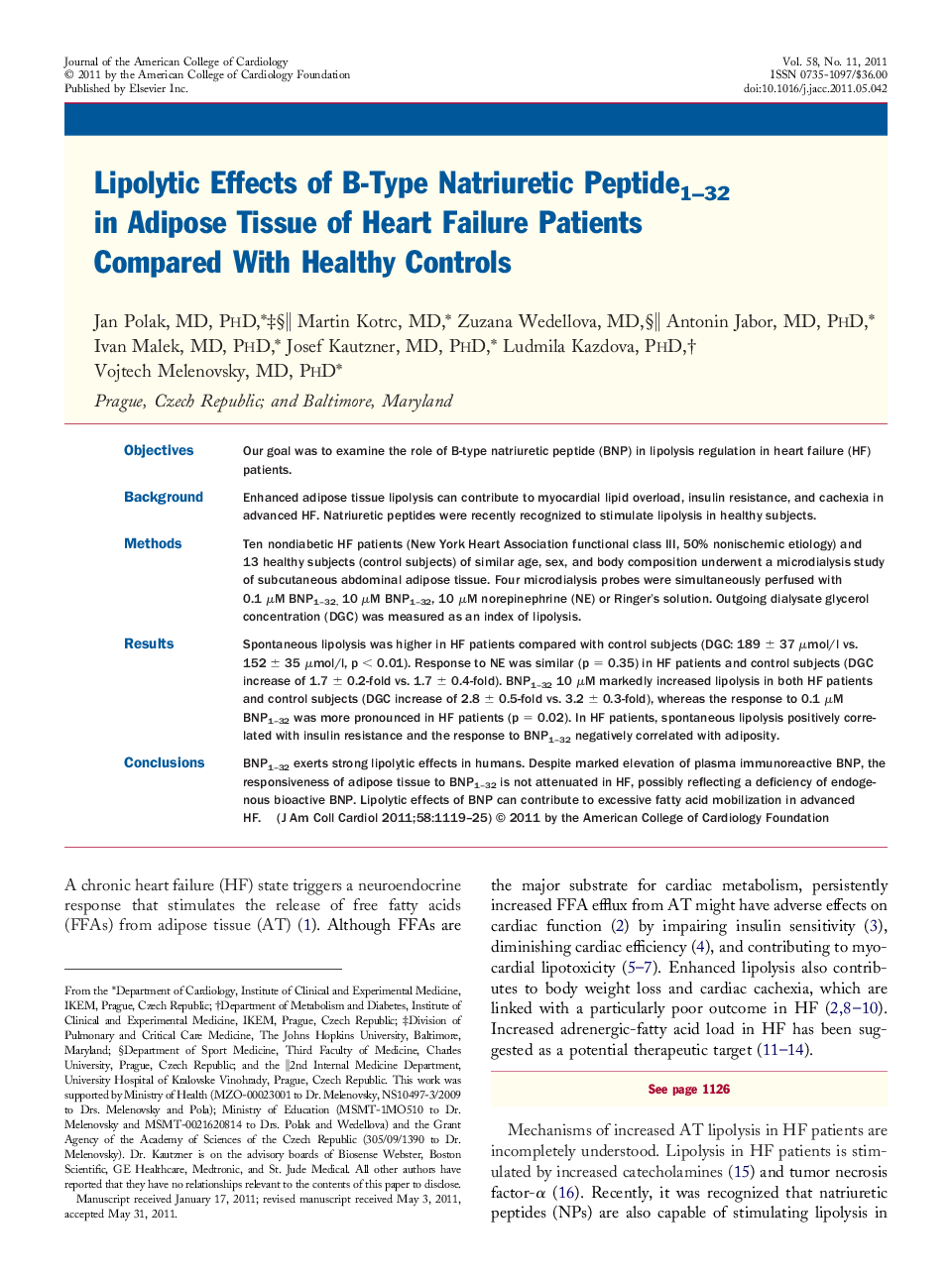| کد مقاله | کد نشریه | سال انتشار | مقاله انگلیسی | نسخه تمام متن |
|---|---|---|---|---|
| 2948661 | 1577248 | 2011 | 7 صفحه PDF | دانلود رایگان |

ObjectivesOur goal was to examine the role of B-type natriuretic peptide (BNP) in lipolysis regulation in heart failure (HF) patients.BackgroundEnhanced adipose tissue lipolysis can contribute to myocardial lipid overload, insulin resistance, and cachexia in advanced HF. Natriuretic peptides were recently recognized to stimulate lipolysis in healthy subjects.MethodsTen nondiabetic HF patients (New York Heart Association functional class III, 50% nonischemic etiology) and 13 healthy subjects (control subjects) of similar age, sex, and body composition underwent a microdialysis study of subcutaneous abdominal adipose tissue. Four microdialysis probes were simultaneously perfused with 0.1 μM BNP1–32, 10 μM BNP1–32, 10 μM norepinephrine (NE) or Ringer's solution. Outgoing dialysate glycerol concentration (DGC) was measured as an index of lipolysis.ResultsSpontaneous lipolysis was higher in HF patients compared with control subjects (DGC: 189 ± 37 μmol/l vs. 152 ± 35 μmol/l, p < 0.01). Response to NE was similar (p = 0.35) in HF patients and control subjects (DGC increase of 1.7 ± 0.2-fold vs. 1.7 ± 0.4-fold). BNP1–32 10 μM markedly increased lipolysis in both HF patients and control subjects (DGC increase of 2.8 ± 0.5-fold vs. 3.2 ± 0.3-fold), whereas the response to 0.1 μM BNP1–32 was more pronounced in HF patients (p = 0.02). In HF patients, spontaneous lipolysis positively correlated with insulin resistance and the response to BNP1–32 negatively correlated with adiposity.ConclusionsBNP1–32 exerts strong lipolytic effects in humans. Despite marked elevation of plasma immunoreactive BNP, the responsiveness of adipose tissue to BNP1–32 is not attenuated in HF, possibly reflecting a deficiency of endogenous bioactive BNP. Lipolytic effects of BNP can contribute to excessive fatty acid mobilization in advanced HF.
Journal: Journal of the American College of Cardiology - Volume 58, Issue 11, 6 September 2011, Pages 1119–1125